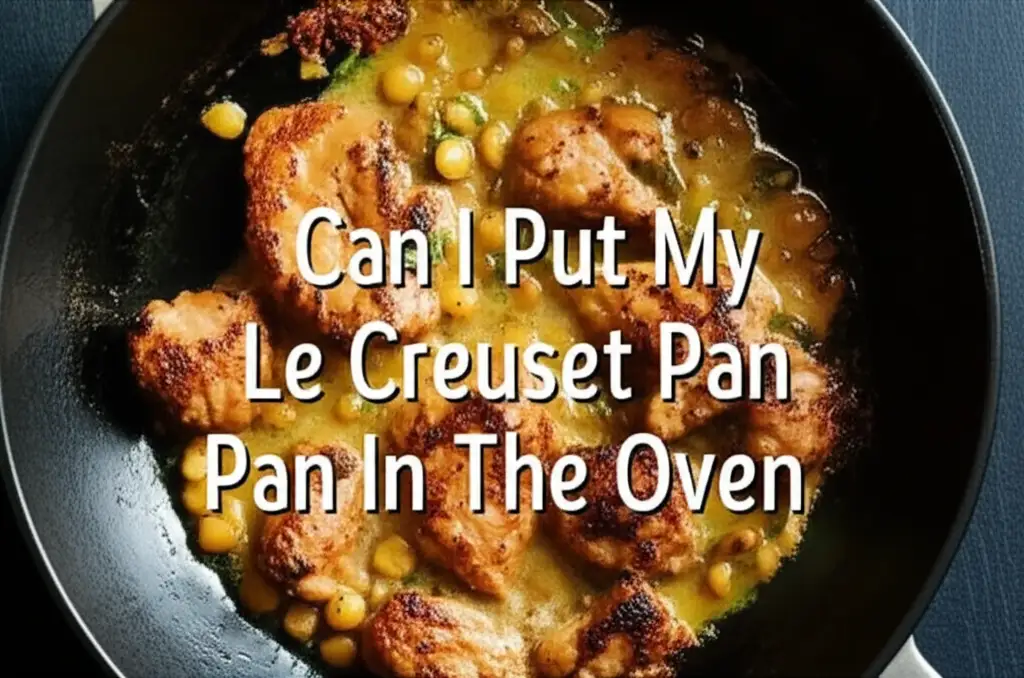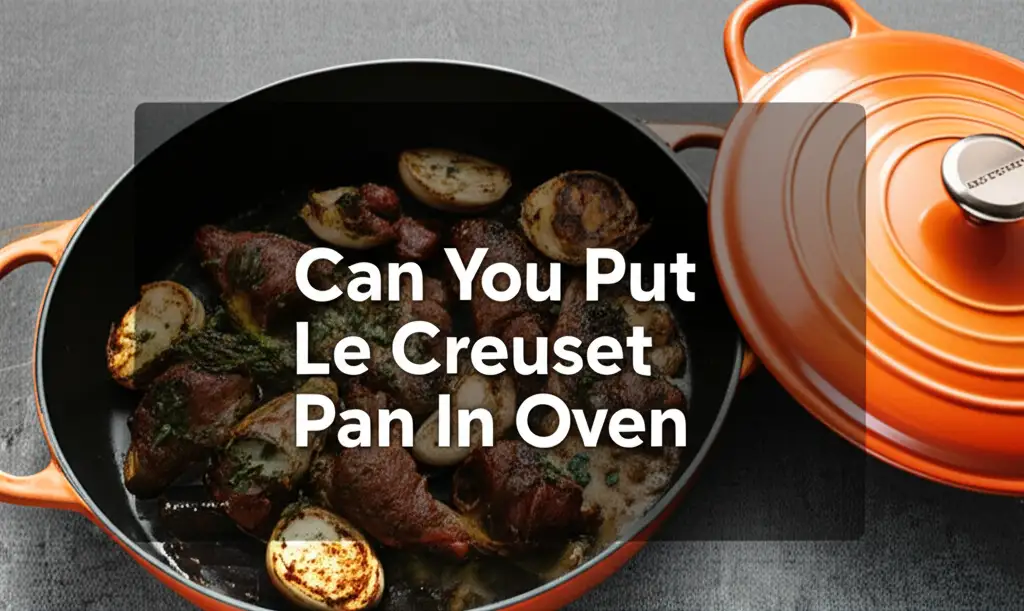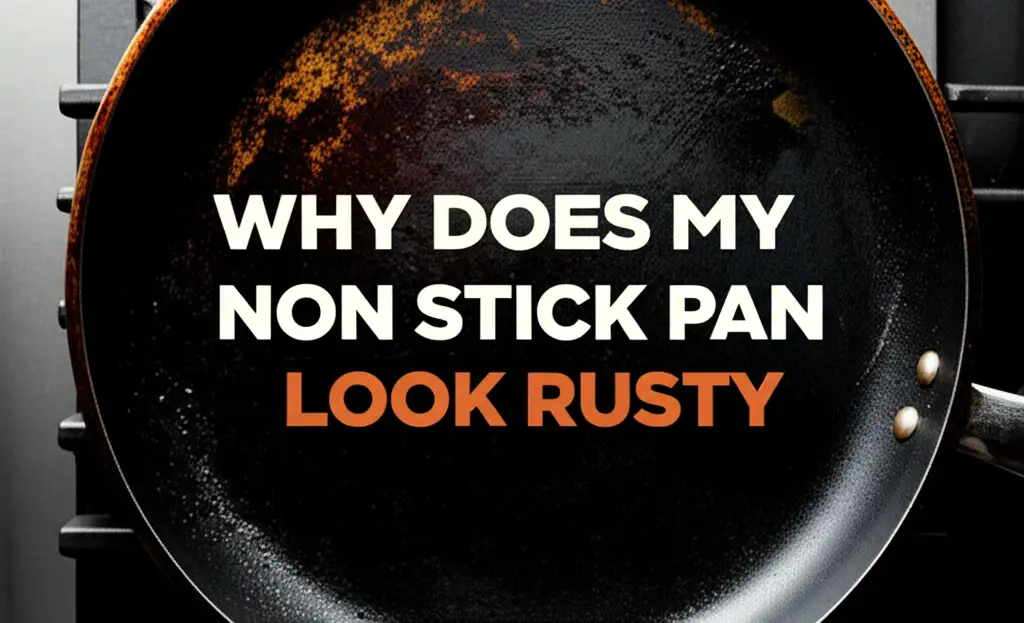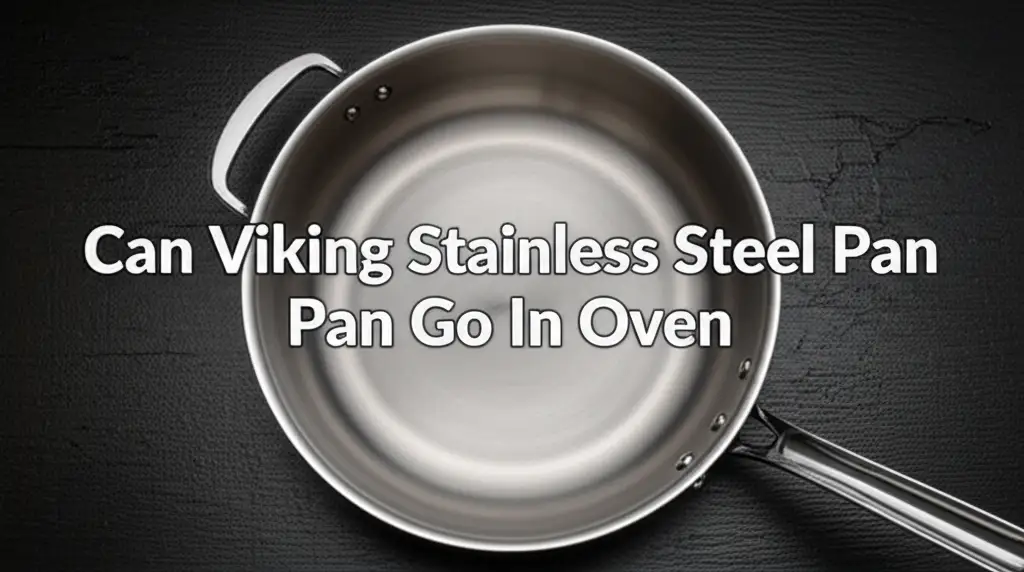· Davia Murnell · Cookware Care · 18 min read
Can I Put My Le Creuset Pan In The Oven

Le Creuset in the Oven: Safe Temperatures and Uses
Many home cooks admire Le Creuset cookware. Its vibrant colors and superior performance make it a kitchen favorite. A common question arises: “Can I put my Le Creuset pan in the oven?” You want to use your cherished piece for a variety of cooking methods, including baking and roasting. Understanding its oven capabilities ensures both safety and the longevity of your investment.
This guide explores everything about using your Le Creuset pan in the oven. We will cover safe temperature limits, types of handles, and best practices. You will learn how to prepare your pan for oven use and care for it afterward. My aim is to help you unlock the full potential of your Le Creuset cookware. Let us dive into the details.
Takeaway
- Le Creuset enamel cast iron cookware is generally oven-safe.
- Temperature limits vary based on the knob or handle material.
- Phenolic (black) knobs are safe up to 500°F (260°C).
- Stainless steel knobs are safe at any oven temperature.
- Always check specific product instructions for your model.
- Avoid thermal shock by letting pans cool slowly.
Your Le Creuset pan is highly versatile for oven cooking. Most Le Creuset enamel cast iron pieces are indeed oven-safe. You can confidently place them in a preheated oven. The key is knowing the maximum safe temperature, which often depends on the material of the knob or handle.
Understanding Le Creuset Cookware Construction
Le Creuset cookware is famous for its quality. It features cast iron coated with a layer of enamel. This unique combination gives the pans many benefits. The cast iron core provides excellent heat retention and even heat distribution. The enamel coating prevents rusting and makes cleaning easy.
This enamel is a type of glass. It is fused to the cast iron at very high temperatures. This process creates a durable, non-reactive surface. This surface is resistant to acids and odors. It also makes the cookware suitable for many cooking methods, including oven use.
Le Creuset offers various pieces like Dutch ovens, braisers, and skillets. Each piece serves different culinary needs. Their robust construction means they handle high heat well. This makes them ideal for both stovetop and oven cooking. Knowing this construction helps you understand their oven safety limits.
Oven Safety Explained: Handles and Knobs
The main factor determining your Le Creuset pan’s oven safety is its knob or handle material. Le Creuset uses different materials for these parts. Each material has a specific temperature limit. Knowing these limits prevents damage to your pan.
Most Le Creuset Dutch ovens and casseroles come with a phenolic knob. This is a black, heat-resistant plastic. These knobs are highly durable. They are safe for oven use up to 500°F (260°C). This temperature covers most home baking and roasting needs.
Some Le Creuset pieces, especially larger ones, feature stainless steel knobs. Stainless steel is extremely heat-resistant. It can withstand any temperature a home oven can reach. If your pan has a stainless steel knob, you do not need to worry about the knob melting or deforming. Always check your specific pan’s knob type before putting it into a very hot oven.
Different Knob Types and Their Limits
- Phenolic (Black) Knobs: These are standard on many Le Creuset pieces. They are oven-safe up to 500°F (260°C). This temperature is suitable for most baking, roasting, and braising recipes. If a recipe requires higher temperatures, you can often swap the phenolic knob for a metal one.
- Stainless Steel Knobs: These knobs are designed for high-temperature cooking. They are safe for use at any oven temperature. You can confidently use pans with stainless steel knobs for bread baking at very high heats. Many customers buy stainless steel replacement knobs if they frequently cook above 500°F.
- Integral Cast Iron Handles: Many skillets, braisers, and casseroles have handles made from the same cast iron as the pan. These are completely oven-safe. They can withstand any temperature your oven can reach. Remember these handles get extremely hot. Always use oven mitts when handling them.
Understanding these distinctions is critical. It helps you use your Le Creuset pan safely and effectively in the oven. For instance, if you are planning to bake a no-knead bread that requires a 500°F oven, a phenolic knob will be perfectly fine. If your oven goes higher, or you want maximum flexibility, a stainless steel knob is a great choice. Can I Put My Cuisinart Stainless Steel Pan In The Oven also delves into material-specific oven safety, providing useful comparative information.
Maximum Oven Temperatures for Le Creuset
Le Creuset cookware is built to last. Its robust design allows it to handle significant heat. However, there are specific maximum temperatures for safe oven use. These limits ensure the longevity of your cookware and prevent damage.
The main body of Le Creuset’s enamel cast iron is safe for oven use up to 500°F (260°C) with its standard phenolic knob. This applies to Dutch ovens, casseroles, braisers, and other popular pieces. This temperature range covers nearly all home cooking applications. You can bake cakes, roast vegetables, and braise meats with confidence.
If your Le Creuset piece has a stainless steel knob or integral cast iron handles, it can withstand even higher temperatures. These components are oven-safe to any temperature a home oven can generate. This is particularly useful for recipes requiring very high heat, like baking artisan bread. Always consult the specific care instructions that came with your Le Creuset piece. Manufacturer guidelines are the most accurate source of information for your particular model.
Key Temperature Considerations
- Standard Enamel Cast Iron: Generally safe up to 500°F (260°C) with phenolic knob.
- Stainless Steel Knobs/Cast Iron Handles: Oven-safe at any home oven temperature.
- Stoneware: Le Creuset also makes stoneware, which typically has different temperature limits. Most stoneware is safe up to 500°F (260°C). Always verify for your specific stoneware piece.
- Silicone Accessories: Some Le Creuset products come with silicone parts or accessories. These generally have lower temperature limits, often around 450°F (232°C). Remove them before placing the pan in a hot oven if the temperature exceeds their limit.
Understanding these temperature variations helps you maximize the use of your Le Creuset. You can confidently select the right pan for your oven recipe. High heat cooking requires careful attention to the type of knob on your Le Creuset pan. How to clean a burnt pan provides excellent advice if any accidental scorching occurs, highlighting the importance of managing heat effectively.
Optimal Uses for Le Creuset in the Oven
Le Creuset cookware excels in the oven due to its excellent heat retention. The even heat distribution from the cast iron core ensures consistent cooking. This makes it perfect for a wide range of oven-based dishes. I love using my Le Creuset for various recipes.
One of the most popular uses is braising. The heavy lid creates a self-basting environment. This keeps moisture in, resulting in tender meats and flavorful stews. Roasting vegetables or chicken also works beautifully. The pan heats evenly, promoting browning and caramelization.
Baking bread in a Le Creuset Dutch oven is another fantastic application. The pan acts like a mini-oven inside your oven. It traps steam, creating a crisp crust and a soft interior. You can also bake casseroles, gratins, and even desserts in your Le Creuset. Its versatility makes it an indispensable tool for oven cooking.
Versatile Oven Applications
- Braising and Stewing: The heavy, tight-fitting lid of a Le Creuset Dutch oven is ideal for long, slow cooking. It keeps moisture locked in. This makes tough cuts of meat incredibly tender. You can start on the stovetop and finish in the oven for deep flavors.
- Roasting: Roasting chicken, vegetables, or even a pot roast works wonderfully. The even heat helps ingredients cook uniformly. This results in beautiful browning and delicious textures.
- Baking Bread: Many bakers use Le Creuset Dutch ovens for no-knead bread recipes. The preheated pan creates a steamy environment. This promotes a fantastic crust and excellent rise. Remember to use a stainless steel knob or remove a phenolic one if baking above 500°F.
- Casseroles and Gratins: Le Creuset casseroles and braisers are perfect for oven-baked dishes. Their excellent heat retention keeps food warm long after serving. They also transition beautifully from oven to table.
- Baking Desserts: You can bake fruit crumbles, cobblers, or even cakes in certain Le Creuset pieces. The enameled surface ensures even baking and easy release.
The versatility of Le Creuset in the oven is truly impressive. It can handle almost any recipe you throw at it. If you have a Le Creuset grill pan, while primarily for stovetop grilling, remember to check its specific oven suitability. Some grill pans are also oven-safe, expanding their use cases.
Preparing Your Le Creuset for Oven Use
Proper preparation is key to successful oven cooking with Le Creuset. It helps ensure even cooking and protects your cookware. The steps are simple but important. Following them makes a big difference in your results.
First, always preheat your oven to the desired temperature. Place the Le Creuset pan into the cold oven as it preheats. This allows the cast iron to heat up gradually. Sudden temperature changes can stress the enamel. This practice helps prevent thermal shock.
Next, consider if your recipe requires oil or butter. Most recipes call for some fat for browning or to prevent sticking. Spread a thin, even layer of oil or butter on the cooking surface. This creates a non-stick barrier. It also helps achieve a beautiful sear or crust.
Essential Preparation Steps
- Gradual Heating: Place your Le Creuset pan into a cold oven. Then, turn on the oven and allow it to preheat with the pan inside. This gradual heating prevents thermal shock, which can damage the enamel. Do not place a cold pan into a hot oven, or a hot pan into cold water.
- Greasing the Pan: For most oven recipes, especially those involving baking or roasting, a thin layer of cooking oil or butter is beneficial. This helps prevent food from sticking. It also aids in achieving a nice crust or browning.
- Check Knob/Handle Type: As discussed, confirm the knob type (phenolic or stainless steel) matches your desired oven temperature. If you plan to bake at temperatures above 500°F (260°C) and have a phenolic knob, either replace it with a stainless steel knob or use a pan without a lid.
- Lid Usage: If your recipe requires a lid, ensure it fits snugly. The lid helps retain moisture, which is crucial for braising and stewing. For recipes needing browning, you might remove the lid for the last part of cooking.
- Oven Mitts: Always use sturdy oven mitts or pot holders. Le Creuset’s cast iron handles get extremely hot in the oven. Even the lid handle becomes hot. Safety is paramount when handling hot cookware.
Taking these steps ensures your Le Creuset pan performs its best in the oven. It also helps extend its lifespan. For comprehensive care, remember to keep the exterior clean, too. How to clean the outside of Le Creuset cookware offers valuable tips for maintaining its pristine appearance even after intensive oven use.
After Oven Use: Cooling and Cleaning Le Creuset
Once your Le Creuset pan comes out of the oven, careful handling is essential. The pan will be extremely hot. Do not place it directly on a cold surface or run cold water over it. This sudden temperature change can cause thermal shock. Thermal shock can lead to cracks or chips in the enamel.
Let the pan cool down gradually on a heat-resistant surface. A trivet, a cooling rack, or a wooden cutting board works well. Allow it to cool completely before you begin cleaning. Once cool, cleaning your Le Creuset pan is usually straightforward. The enameled surface is non-porous and resistant to sticking.
For most messes, warm soapy water and a soft sponge are enough. If there are stubborn bits, soak the pan for a few minutes. Avoid abrasive cleaners or metal scouring pads. These can scratch or dull the enamel.
Post-Oven Care Tips
- Gradual Cooling: Let the pan cool naturally on a trivet or heat-safe surface. Avoid sudden temperature changes, like running cold water over a hot pan. This is crucial to prevent thermal shock, which can damage the enamel.
- Soaking Stubborn Residue: If food is stuck, fill the pan with warm water and a little dish soap. Let it soak for 15-20 minutes. This softens food particles, making them easier to remove.
- Gentle Cleaning: Use a soft sponge, nylon scrubber, or a Le Creuset cleaning brush. Avoid metal scourers, abrasive pads, or harsh chemical cleaners. These can scratch the enamel finish.
- Drying Thoroughly: After washing, dry the pan completely with a clean cloth. Pay attention to the rim where the enamel meets the exposed cast iron. This prevents rust on the unenameled edges.
- Storage: Store your Le Creuset pan in a dry place. You can place a pan protector or a paper towel between stacked pieces. This protects the enamel from scratches.
Proper cooling and cleaning keep your Le Creuset looking new for years. It ensures it remains ready for your next oven adventure. If you ever face truly stubborn burnt-on food from oven mishaps, a guide like how to clean a pan that is burnt provides specific, gentle methods for removal without damaging the enamel.
Common Mistakes to Avoid When Using Le Creuset in the Oven
While Le Creuset is durable, certain practices can damage it. Avoiding these common mistakes helps preserve your cookware. It ensures your pan lasts for generations. I have learned to be careful with my own Le Creuset pieces.
One major mistake is thermal shock. As mentioned, placing a hot pan into cold water or a cold pan into a very hot oven can cause cracking. Always allow gradual temperature changes. Another error is using metal utensils. Metal can scratch the enamel surface. Stick to silicone, wood, or heat-resistant plastic utensils.
Overheating the pan can also be an issue. Even though it is oven-safe, extreme, prolonged dry heat can sometimes discolor the enamel over time. Always use cooking oil or liquid as directed by the recipe. Lastly, avoid harsh cleaning products. Bleach, oven cleaners, or abrasive scrubbers will damage the finish.
Preventing Damage and Maximizing Longevity
- Avoid Thermal Shock: Never transfer a hot Le Creuset pan directly to a cold surface or run cold water over it. Conversely, avoid placing a cold pan into a screaming hot oven without gradual preheating. This sudden temperature change can lead to hairline cracks in the enamel.
- Use Proper Utensils: Only use wooden, silicone, or heat-resistant plastic utensils. Metal utensils can scratch or chip the beautiful enamel surface. Even minor scratches can compromise the integrity over time.
- Do Not Overheat Dry: Le Creuset is designed for cooking with liquids or fats. Avoid heating an empty pan on high heat for extended periods, especially in the oven. This can cause the enamel to discolor or potentially crack. Always add oil, butter, or ingredients before heating.
- Skip Abrasive Cleaners: Never use abrasive cleaning pads, steel wool, or harsh chemical cleaners like oven cleaner. These products can scratch, dull, or even strip the enamel. Stick to warm, soapy water and a soft sponge.
- Handle with Care: Though robust, Le Creuset is cast iron. Dropping it can cause chipping or cracking. Store it carefully to prevent accidental falls or impacts.
- Mind the Knob: Always be aware of your knob type. If your recipe requires temperatures exceeding 500°F (260°C) and you have a phenolic knob, switch it out for a stainless steel version or opt for a lidless cooking method.
By avoiding these pitfalls, you will ensure your Le Creuset pan remains in excellent condition. It will serve you for many years to come. Proper care goes a long way in protecting your investment. If you are cleaning a specific type of cookware, like a Le Creuset grill pan, remember these gentle cleaning principles apply across the brand.
Comparing Le Creuset Oven Safety to Other Cookware
Understanding Le Creuset’s oven safety is easier when compared to other common cookware materials. Each material has its own set of rules for oven use. This comparison helps you appreciate Le Creuset’s unique benefits and limitations.
Stainless steel pans are generally oven-safe. However, their handles might not be. Plastic or silicone handles on stainless steel pans often have lower temperature limits. Pure cast iron, like a Lodge skillet, is fully oven-safe to very high temperatures because it has no plastic components. However, it requires seasoning and is prone to rust without proper care.
Non-stick pans are usually the most restrictive. Their non-stick coatings can break down at high temperatures, releasing fumes. Most non-stick pans are only oven-safe up to 350-400°F (175-200°C). Le Creuset, with its enamel coating, offers the durability and heat retention of cast iron without the maintenance of bare cast iron or the low-temperature limits of traditional non-stick.
Material-Specific Oven Considerations
- Le Creuset (Enameled Cast Iron): Offers excellent heat retention and even cooking. Generally oven-safe up to 500°F (260°C) with phenolic knobs, or any temperature with stainless steel knobs/cast iron handles. Its enamel prevents rusting and makes cleaning easy.
- Stainless Steel Cookware: Most stainless steel pans are oven-safe. The limiting factor is often the handle material. Pans with riveted stainless steel handles are usually fully oven-safe. Those with plastic or silicone grips may have lower temperature limits. Check manufacturer instructions. For more on this, see Can I Put My Cuisinart Stainless Steel Pan In The Oven.
- Bare Cast Iron (e.g., Lodge): Highly durable and oven-safe to extremely high temperatures. However, it requires regular seasoning to maintain its non-stick properties and prevent rust. It also retains flavors more easily than enameled cast iron.
- Non-stick Cookware: Generally has the lowest oven-safe temperature limits. Many traditional non-stick coatings degrade and release fumes above 350-400°F (175-200°C). Always check the specific brand’s guidelines. Newer ceramic non-stick often has higher limits.
- Ceramic Cookware: Often oven-safe, but temperature limits vary by manufacturer. Some ceramic pans can go up to 450-500°F (232-260°C). They are prone to chipping if dropped.
- Glass Cookware (Pyrex): Excellent for baking and oven roasting. Generally safe up to 450°F (232°C). It is susceptible to thermal shock, meaning it can shatter if exposed to sudden temperature changes (e.g., hot dish on cold surface).
Le Creuset stands out as a versatile and reliable choice for oven cooking. It combines the benefits of heat retention with easy care. Understanding these differences helps you choose the right pan for the job.
FAQs About Using Le Creuset in the Oven
Is all Le Creuset cookware oven safe?
Most Le Creuset enamel cast iron cookware is oven safe. The main difference lies in the maximum temperature they can withstand. This limit depends on the material of the knob or handle. Always check the specific care instructions for your particular piece.
What temperature can Le Creuset go in the oven?
Le Creuset cookware with a standard black phenolic knob is safe up to 500°F (260°C). If your Le Creuset pan has a stainless steel knob or integral cast iron handles, it is safe at any temperature your home oven can reach. Always confirm your specific product’s guidelines.
Can I put my Le Creuset with a plastic knob in the oven?
Yes, if the “plastic” knob is the standard black phenolic knob. These are heat-resistant and oven-safe up to 500°F (260°C). If you plan to cook at higher temperatures, consider replacing it with a stainless steel knob or using a Le Creuset piece without a lid.
Can I preheat my Le Creuset Dutch oven empty in the oven?
It is generally recommended to avoid preheating your Le Creuset pan empty for extended periods at very high temperatures. While it can withstand heat, always adding a little oil, liquid, or ingredients helps protect the enamel and ensures longevity. Gradual heating from a cold oven is best.
Can Le Creuset go under the broiler?
Le Creuset enamel cast iron cookware is safe for use under the broiler. However, be cautious and monitor closely to prevent overheating. Ensure the pan’s knob (if applicable) is stainless steel, as phenolic knobs are not recommended for broiler use due to the intense direct heat.
How do I clean my Le Creuset after oven use?
Let your Le Creuset pan cool completely before cleaning. Use warm soapy water and a soft sponge or nylon brush. For stubborn food, soak the pan for 15-20 minutes. Avoid abrasive cleaners or metal scouring pads, as these can damage the enamel finish.
Conclusion
I hope this comprehensive guide has answered your question: “Can I put my Le Creuset pan in the oven?” The answer is a resounding yes, with a few important considerations. Your Le Creuset enamel cast iron cookware is a versatile tool for oven cooking. It excels at braising, roasting, and baking.
Remember to pay attention to your pan’s knob or handle material. Phenolic knobs are safe up to 500°F, while stainless steel knobs or integral cast iron handles can handle any home oven temperature. Always allow your pan to heat and cool gradually. This simple practice prevents thermal shock and protects the beautiful enamel.
By following these guidelines, you will enjoy many years of delicious meals cooked in your Le Creuset. Your investment in quality cookware will continue to pay off. So go ahead, unlock the full potential of your Le Creuset and confidently put your Le Creuset pan in the oven for your next culinary creation! Happy cooking!





